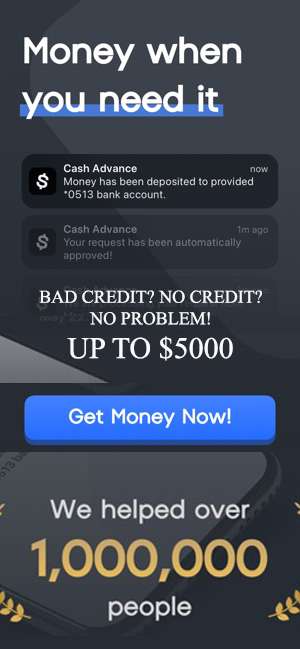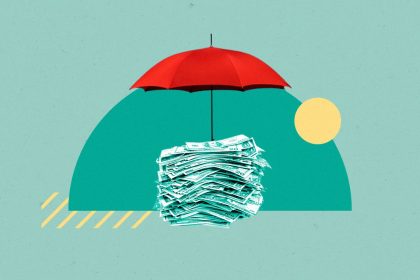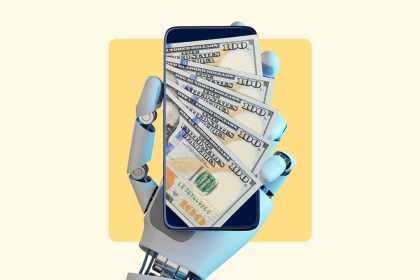Congratulations! Becoming debt-free is a game-changer. Making that last payment on credit cards, student loans or whatever debt burden you carried must have been a huge weight off your shoulders. After having paid off $300,000 of debt, I know that feeling well. But when the celebratory vibes wear off and the weight is lifted, what comes next?
Without intention, it’s easy to slip back into old spending patterns, let lifestyle creep eat into your bottom line or simply drift without purpose. Shifting your debt-payoff habits into more complex savings and investing strategies can be intimidating.
For years, I viewed debt freedom as the ultimate financial goal, when in actuality, it was just the first step into financial freedom, and even retiring early.
Here are three strategies to carry into your debt-free so you can leverage the momentum you’ve built into long-term wealth.
1. Protect your peace with a robust “Keep Calm Fund”
I prefer the term “Keep Calm Fund” rather than emergency fund, because it doesn’t have to be a life-or-death situation for you to need to access your savings for unexpected events.
Even after you’re debt-free, surplus income doesn’t negate the need for a solid financial buffer. And right now, many Americans are falling short. According to Bankrate’s 2025 Annual Emergency Savings Report:
- Only 46 percent of U.S. adults have enough emergency savings to cover three months of expenses.
- About 24 percent of Americans have no emergency savings at all.
- Just 27 percent have enough saved to cover six months or more of expenses.
- Nearly 1 in 3 Americans (~37 percent) have tapped into their emergency savings in the previous 12 months.
- Meanwhile, 60 percent say they are uncomfortable with their level of emergency savings.
When you don’t have debt payments to worry about each month, you’ll have more disposable income. Avoid the temptation to spend it or dig yourself back into debt, and invest in a future rainy day instead.
What to do next
Since you’ve paid off debt, redirect what was going to interest payments into your Keep Calm Fund. Here are suggestions:
- Aim to save three months of expenses in a high-yield savings account to start, then possibly up to six months depending on job stability, dependents, health conditions or other unique circumstances.
- Automate savings transfers to this dedicated account and name it your “Keep Calm Fund” to remind yourself of its intention and purpose.
- Review annually (or after big life changes) to ensure you have the amount of savings you need. Costs will change as your life changes — what covered you three years ago may not suffice today.
2. Continue lifelong budgeting, but make it flexible and joyful
Paying off debt likely required strict budgeting, as it did for me. But data suggests that many Americans aren’t maintaining even basic budget review habits.
Fewer than one-third of Americans (~29 percent) reviewed their budget over a recent 30-day period, according to Bankrate’s 2025 Money and Mental Health Survey, and only about 34 percent tracked their spending in that same period.
And when it comes to discretionary spending, 54 percent expect to spend less on travel, dining out, or entertainment in 2025, according to Bankrate’s Discretionary Spending Survey.
Many people only budget sporadically, but rising costs and inflation are prompting consumers to trim both fun and essentials. I temporarily chose to forgo shopping, big trips and expensive dinners to pay off my student loans, and every sacrifice was well worth it. But when you’re debt-free, budgeting changes from survival to empowerment, and it took me some time to shift my mindset from cutting expenses to curating experiences.
What to do next
- Keep budgeting part of your regular monthly routine. It’s actually way more fun to budget without the stress of all those debt payments. Each month, review what you spent versus what you intended, what changed and which expenses you paused during debt payoff that you may want to bring back.
- Use budgets to align spending with your values in everyday life, not just to limit. Now you can allocate money intentionally, for joy, growth and giving. For example, I now budget for yoga, hip-hop classes and meals out with friends regularly, not just for special occasions.
- Build room in your budget for making core memories every year. Practice removing the guilt from this type of spending, as long as you budgeted for it.
I’m writing this article on my first trip to Malaysia, something I’ve always wanted to do since becoming debt-free. You didn’t pay off all this debt just to feel bad about having fun!
3. Protect and grow your wealth ecosystem
Debt freedom gives you real opportunity, not just relief. This is the stage to protect what you’ve built and grow forward. According to Bankrate’s 2025 Financial Regrets Survey,the most common regrets reported by respondents were not saving for retirement early enough and taking on too much credit card debt. However, around 31 percent of Americans are still willing to take on debt for travel, dining out and entertainment.
These data points illustrate the complexity of our attitudes toward spending and financial planning, making it easy to understand how many people can slip back into debt after paying it off. To avoid this backslide, maintain your focus on staying debt-free and growing your cushion.
What to do next
- Maintain the habit of paying off your credit cards weekly, not just monthly. Starting your budgeting routine with a clean credit card slate makes it easier to prevent debt from creeping back in.
- Review your insurance plans, including health, disability and life, if you have dependents. Your assets and future income need to be defended now that you are focused on building assets, not just paying down debt.
- If you don’t already, begin investing regularly in at least one retirement account until it’s maxed out to its IRS limit. I recommend starting with your employer retirement accounts first, if you have it. Just as it was thrilling to watch your debt balances shrink, it can be even more exciting to watch your retirement savings grow.
Final thoughts: The hard part is over, keep going
Many Americans remain financially fragile — lacking adequate emergency savings, hesitating to budget and still facing the risk of slipping back into debt. This doesn’t have to be your destiny.
Debt freedom is one of the biggest financial achievements you’ll make, but it’s not the finish line.
Personally, I’ve found saving and investing to be so much easier and more fun than paying down debt. If you’ve made it this far, you can have confidence that you already have the foundational skills to become a great investor and spender, too.
But you have the advantage now. You’ve built momentum. Use it to create buffers, align your finances with your values and protect your future. By continuing the intentional habits you’ve already implemented, a debt-free life can become a catapult for lasting financial security and meaning.
Why we ask for feedback
Your feedback helps us improve our content and services. It takes less than a minute to
complete.
Your responses are anonymous and will only be used for improving our website.
Help us improve our content
Read the full article here
















